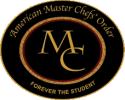If you own or manage a restaurant, you know that your flatware is a crucial part of the dining experience for your guests.
From the moment they sit down, your guests will be examining your flatware and making judgments about your establishment based on the quality of the utensils you give them.
This is why it is so important to keep your restaurant flatware clean, shiny, and spot-free at all times. But what are the best ways to clean and maintain your flatware? That’s what we’ll be discussing today!
In this blog post, you’ll learn all about how to care for your restaurant flatware to ensure they stand the test of time and continue giving your guests an impeccable dining experience.
Types of restaurant flatware
Before we dive into how to look after your restaurant flatware, let’s understand what types are out there – as each will come with its own set of needs.
Restaurant flatware can be made from a variety of materials, including stainless steel, sterling silver, and iron alloy.
Stainless steel: Stainless steel flatware is the most common material used for restaurant flatware because any stainless steel surface is durable, resistant to rust and stains, and easy to clean.
Sterling silver: Sterling silver is less common because it is more expensive and requires special care to prevent tarnishing.
Iron alloy: Iron alloy flatware is also less common because it is more prone to rust and corrosion.
Whichever material you choose for your flatware, make sure you always follow manufacturer instructions for cleaning and maintaining them.
What causes flatware stains, damage, and shine loss?
There are many causes of stains, damage, and shine loss on restaurant flatware. Some common culprits include dried food, hard water, prolonged exposure to acidic foods, and the use of abrasive cleaning products.
Rust spots can also appear on iron alloy flatware if you don’t care for it properly. To avoid these issues, it’s essential to take care when washing and drying your flatware.
Six top tips for cleaning and maintaining your flatware
Follow our tips below to keep your flatware in tip-tip condition for your guests.
Pre-soak correctly
Pre-soaking your flatware can help to loosen dried food and prevent staining. To pre-soak your flatware, place it in a container filled with warm water and a mild cleaning solution.
You can also add a few drops of olive oil to help prevent water spots. Soak your flatware for at least 30 minutes before washing carefully.
Wash and dry with care
Follow our step-by-step guide to washing and drying your restaurant flatware for the best results.
- When washing your flatware, use a soft cloth or sponge to avoid scratching the surface, and avoid using steel wool or wire brushes.
- Use hot water and a mild cleaning solution, or lemon juice and baking soda for tougher stains.
- Rinse your flatware thoroughly with warm water and dry immediately with a clean dish towel or let it air dry.
- If using a dishwasher, be sure to use the dishwasher dry cycle and avoid prolonged exposure to water.
Avoid overloading your dishwasher
If you use a dishwasher to clean your flatware, be careful not to overload it. Overloading your dishwasher can cause the flatware to rub against each other, causing scratches and damage to the surface.
Also, avoid stacking your flatware together when loading them in the dishwasher. Instead, place them separately to avoid scratches and damage.
Apply a silver polish
If you have sterling silver flatware, it is important to use a silver polish regularly to keep it in top condition. Silver polish is specially designed to remove tarnish and restore the shine to your silver flatware.
Apply the silver polish using a soft cloth, then gently rub in a circular motion until you remove any tarnished spots. Rinse your flatware with warm water and dry immediately with a clean cloth.
Separate flatware by material
When storing your flatware, be sure to keep it in a dry place to avoid moisture damage. Use dividers to separate the different types of utensils, such as salad forks, bouillon spoons, and steak knives. This will help to prevent scratching and damage to the flatware.
If you have different types of flatware made from different materials, you should always separate them when storing them. This will prevent any chemical reactions that may occur between the various metals.
For example, if you have stainless steel and sterling silver flatware, store them separately to avoid tarnishing or corrosion.
Refurbish any tarnished flatware
Over time, your restaurant flatware may become scratched, stained, or damaged. To refurbish your flatware, you can use a mixture of white vinegar and warm water to remove stains and water spots.
Want more advice for your restaurant? Check out our previous blog, “8 factors to consider when choosing commercial dinnerware.”
Time to get that silverware sparkling with our top tips
Keeping every piece clean and shiny is crucial if you want your restaurant flatware to work wonderfully for years to come. By following these tips for pre-soaking, washing and drying, and storing your flatware, you can ensure that it’s always looking and performing at its best.
If you’re looking for more advice on selecting or maintaining your restaurant flatware, why not talk to our commercial flatware specialists at Corby Hall? We’re America’s go-to commercial flatware provider, celebrating 40+ years in business and more than 5,000 happy customers on our books.
With our high-quality products, commitment to service, and promise never to discontinue a line, trust you’ll receive the best support in the business to elevate your dining experiences when you choose Corby Hall.



